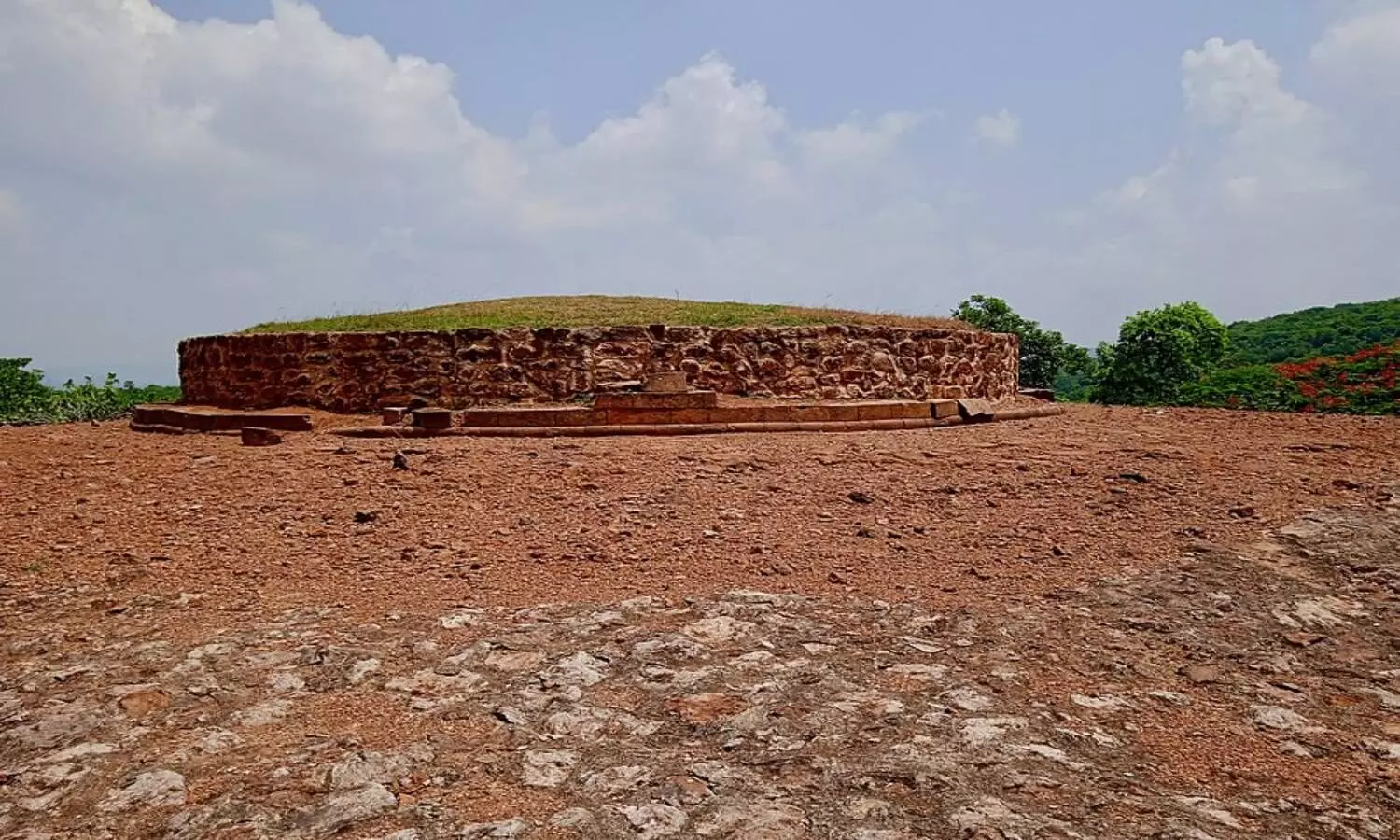History disappearing: 2,300YO Buddhist site in AP's Kodavali under threat from mining
Worried locals allege that the local MRO has given an NOC to the mines and geology department without taking into account the proximity of the archaeological site that is of immense importance.
By Jinka Nagaraju
Hyderabad: A 2,300-year-old Buddhist site in Andhra Pradesh is under threat. Kodavali, located in Gollaprolu mandal in East Godavari district, in all likelihood will disappear once the laterite mining commences on the hill.
Worried locals allege that the local MRO has given an NOC to the mines and geology department without taking into account the proximity of the archaeological site that is of immense importance.
Turning a blind eye to the fact that the land has also been under cultivation for decades and is the source of livelihood for many families, the revenue department has given clearance for mining operations.
Now, local farmers have launched an agitation against the MRO's action. They have submitted a memorandum to the district collector against the NOC which was issued without their knowledge and the eviction notice. Instead of giving pattas to the poor farmers, the MRO's action is robbing them of their livelihood, they alleged.
The MRO, however, called the farmers illegal occupants and said there was no trace of cultivation on the hill slope which falls within the 20-degree radius, making them ineligible for pattas.
A rich history of the Kodavali Buddhist site
Kodavali Buddhist site comes from the golden era of Buddhism in coastal Andhra Pradesh.
The three centuries preceding and after CE witnessed a phenomenal rise and growth of Buddhist institutions in Andhra Pradesh. Starting from Salihundam on Vamsadhara in Srikakulam district to Ramathirtham in Nellore on Penna, many Buddhist sites sprang up in the state. Kodavali is one of the 50 sites so far discovered in the erstwhile Andhra Pradesh.
Historian Robert Sewell and archaeologist Alexander Rea are credited with discovering the site at Kodavali in the 1880s where the first Buddhist rock edict in Brahmi script was also found.
The script was deciphered by experts like Dr. Sten Konow and epigraphist H. Krishna Sastri. The inscription has a reference to a local king called Chandasati who offered gifts to the monastery and constructed wells for the monks. The inscription can be dated to the 2nd Century CE. Some claim the site came into existence between the 3rd and 2nd centuries BC.
The site which was located on the hilltop consists of a Mahastupa (12m diameter) and a Pradakshinapath around it. As many as nine votive stupas were built surrounding the Mahastupa. Remains of huge vihara were also found by the Archaeological Survey of India (ASI). Similarly, traces of monastic cells numbering about 13 were also found in an area of 40m. ASI also recorded the fragments of stone caskets, Chhatri, redware bowls, vases, and carinated handi. A flight of steps was also laid to reach the hilltop.
Pilli Rambabu, a local Buddhist scholar, said allowing mining operations in the vicinity of the Buddhist site will ruin the site. "Blasts, excavations, and transport operations will have a negative impact on the site. Kodavatli now stands testimony to the once flourishing Buddhism in the region. It has a great historical value and needs to be preserved," he said urging the government to revoke the NOC given for the mining operations.
Growing dissent
P.S Ajay Kumar, a local activist who has been fighting for the land rights of the poor, suspected that the NOC was given by the MRO under duress. "When the mines and geology department first asked for a feasibility report for mining, the MRO clearly said the land was under cultivation and mining could not be allowed. But within a few days, the MRO took a different stand and issued a NOC going against her own earlier stand," Ajay added.
Stating that the affidavit filed by the MRO in the court on 9 November 2021 had totally ignored the existence of a valuable Buddhist site, Ajay said the content of the report the MRO submitted to the collector on 15 November on the nature of the land was also full of half-truths and blatant lies. The affidavit and the report to the collector clearly demonstrate the official's scant regard for the precious historical sites and livelihood of the poor, he said.
Meanwhile, the Kodavali Buddhist Stupa Pariraskshana Committee is meeting at the site to oppose the proposed mining operations. Four members of the Myanmar Buddhist Society are also expected to participate in the rally.
It is believed that the site was one of the 84,000 stupas erected by Emperor Ashoka during his lifetime. The organizers said they would oppose the mining operations and launch an agitation till the permissions given to the mining companies are revoked.